Walking through the ancient gates of Lucca feels like stepping back in time. The Renaissance walls that encircle this Tuscan gem aren’t just any old fortification—they’re a complete defensive circuit that has survived 500 years, making them one of Italy’s most remarkable historic treasures.
These impressive stone, brick, and earthwork fortifications offer visitors a 4-kilometer elevated pathway with panoramic views of both the city center and the surrounding Tuscan landscape.

I love starting my visit to Lucca with a leisurely stroll along the top of these walls. Originally built with just two fortified gates equipped with drawbridges and iron double doors, the walls now serve as the city’s most popular promenade.
Unlike many European cities that dismantled their defensive structures as they expanded, Lucca preserved its walls, transforming them into a beautiful tree-lined park perfect for walking, jogging, or cycling.
The bastions and gates you’ll encounter along your circuit tell fascinating stories of Renaissance military engineering.
My favorite time to walk the walls is late afternoon when the sun casts a golden glow over the red-tiled rooftops of the city. You’ll spot locals and visitors alike enjoying this unique urban space—picnicking, exercising, or simply soaking in the atmosphere of a defensive structure brilliantly repurposed for pleasure.
The Historical Tapestry of Lucca’s Walls
Lucca’s magnificent walls tell a story spanning nearly two millennia, evolving from Roman foundations to the impressive Renaissance fortifications we see today. The city’s defensive structures represent one of Italy’s most remarkable examples of military engineering that adapted to changing warfare technologies while maintaining Lucca’s independence.
Foundations from Roman Times through the Middle Ages
Walking along Lucca’s walls, I’m always struck by the layers of history beneath my feet. The first defensive structures date back to Roman times when Lucca was founded as a colony in 180 BCE. These initial walls were modest but effective for their era.
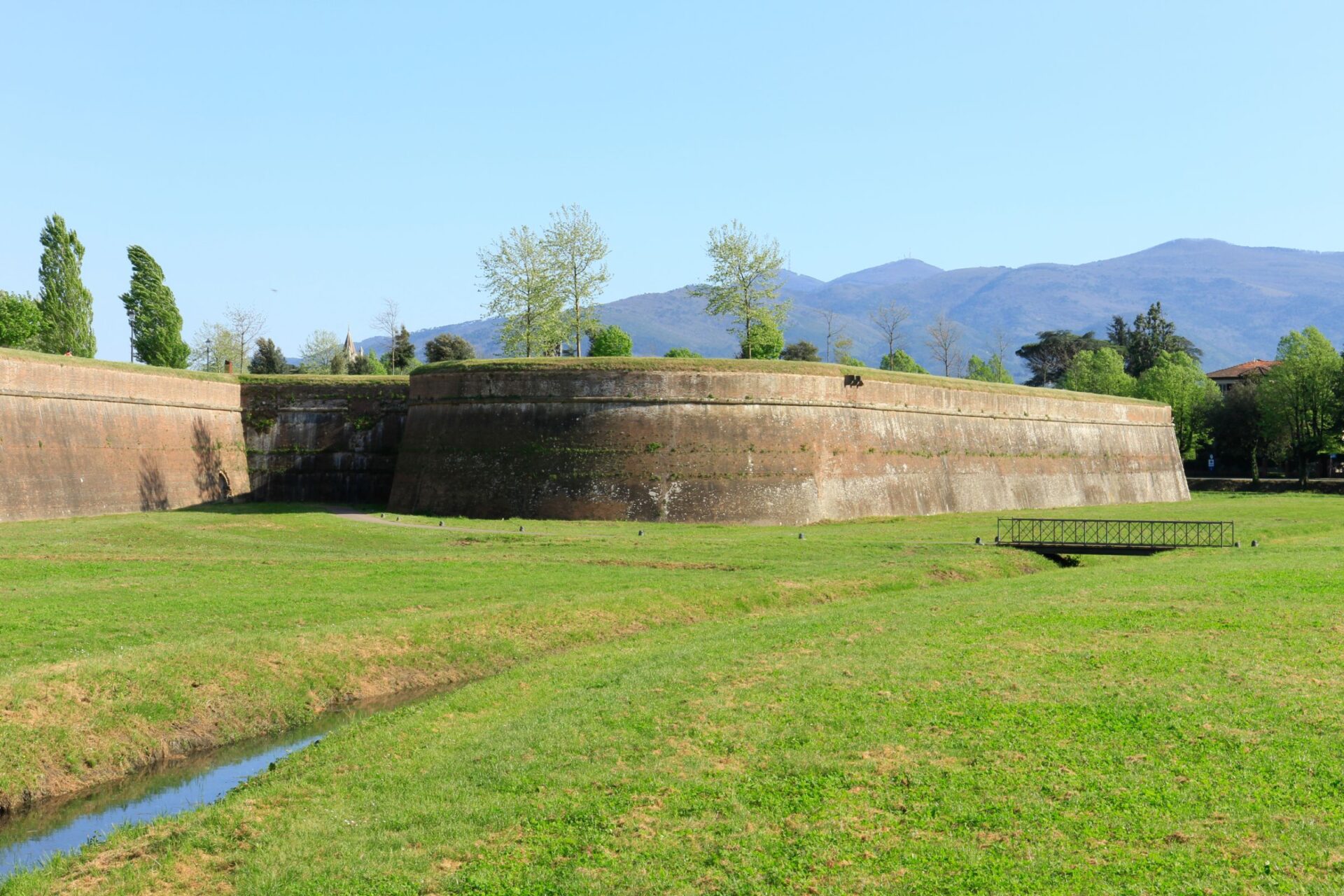
During the Medieval period, the city expanded its defenses significantly. The 12th and 13th centuries saw Lucca grow into a powerful city-state with impressive new walls. These medieval fortifications featured tall, narrow designs with multiple towers for lookouts.
What fascinates me most about these early walls is how they reflected Lucca’s growing importance as a center of silk production and banking. The Republic of Lucca needed strong defenses to protect its wealth and independence from neighboring powers like Florence.
The Flourish of Lucca in the Renaissance Era
The walls we see today were primarily built between the mid-1600s and early 1800s, representing the pinnacle of Renaissance military science. I love telling visitors that these walls were never breached in battle – a testament to their brilliant design.
Unlike medieval walls, these Renaissance fortifications feature sloped earthworks and thick brick barriers designed to withstand cannon fire. The 4.2 km circuit includes 11 bastions, each strategically positioned to eliminate blind spots where attackers might gather.
The Republic of Lucca invested enormous resources in these walls to maintain independence from the powerful Medici family ruling nearby Florence. What’s remarkable is how the design balanced military necessity with beauty – the engineers created not just a fortress but a monument.
Merging History with Modern Preservation Efforts
Today, I find Lucca’s walls serve a completely different purpose than their designers intended. Instead of keeping people out, they now welcome visitors to enjoy a 4-kilometer park circling the city.
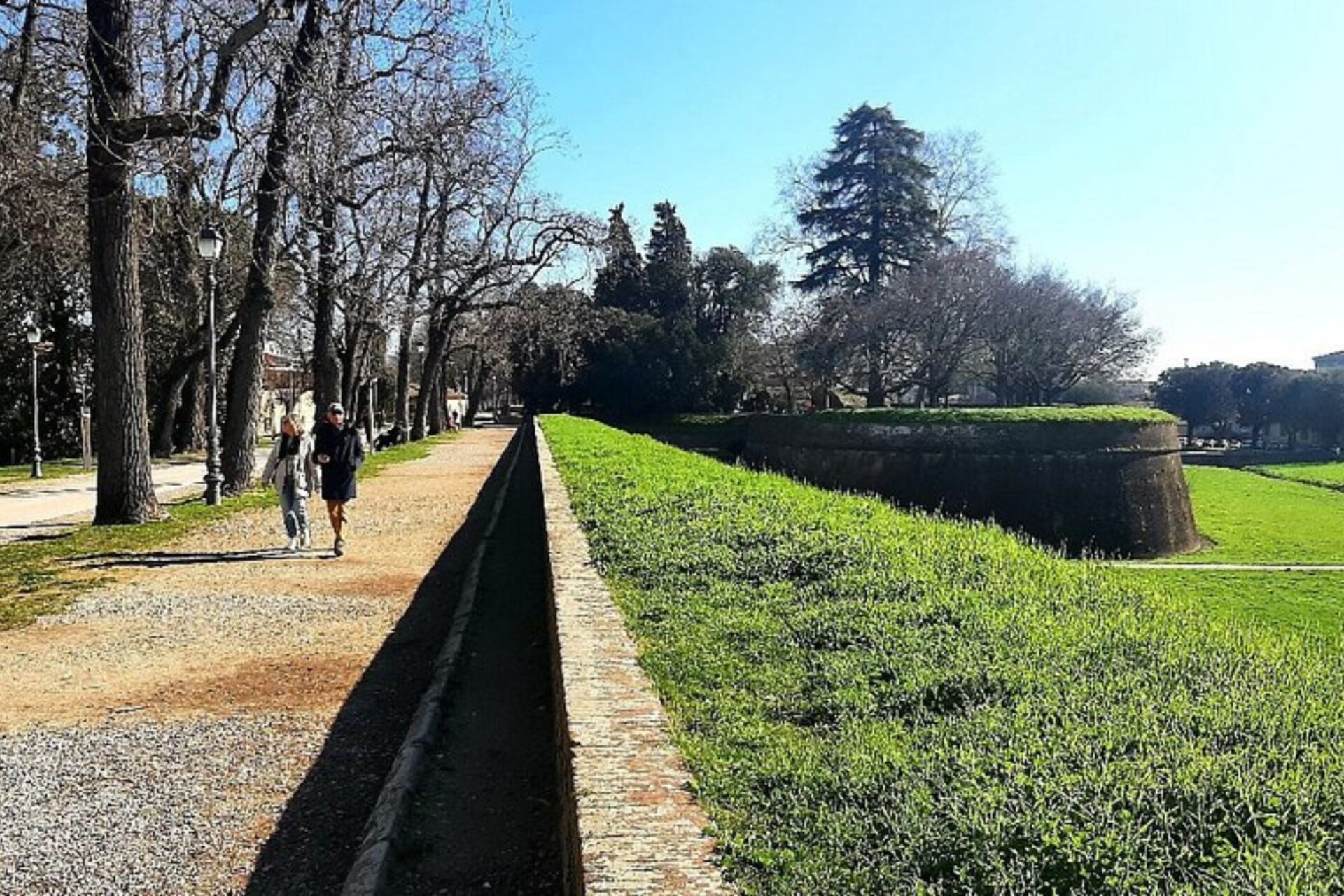
Preservation efforts beginning in the 19th century transformed the military structures into public spaces. The wide promenade atop the walls now features beautiful tree-lined paths where I often join locals jogging, cycling, or simply enjoying gelato on a bench.
Italy’s cultural heritage authorities have done remarkable work maintaining the original stonework while adapting the space for modern use. Recent restoration projects have focused on preserving the authentic Renaissance engineering while ensuring the walls remain accessible to all.
The walls now serve as Lucca’s most beloved public space – a perfect blend of historical significance and modern enjoyment that I recommend as the first stop for any visitor to this charming Tuscan city.
A Journey around the Bastions and Ramparts
Walking Lucca’s walls means discovering eleven distinct bastions, each with unique shapes and stories. These massive structures showcase Renaissance military engineering while offering beautiful views and peaceful green spaces.
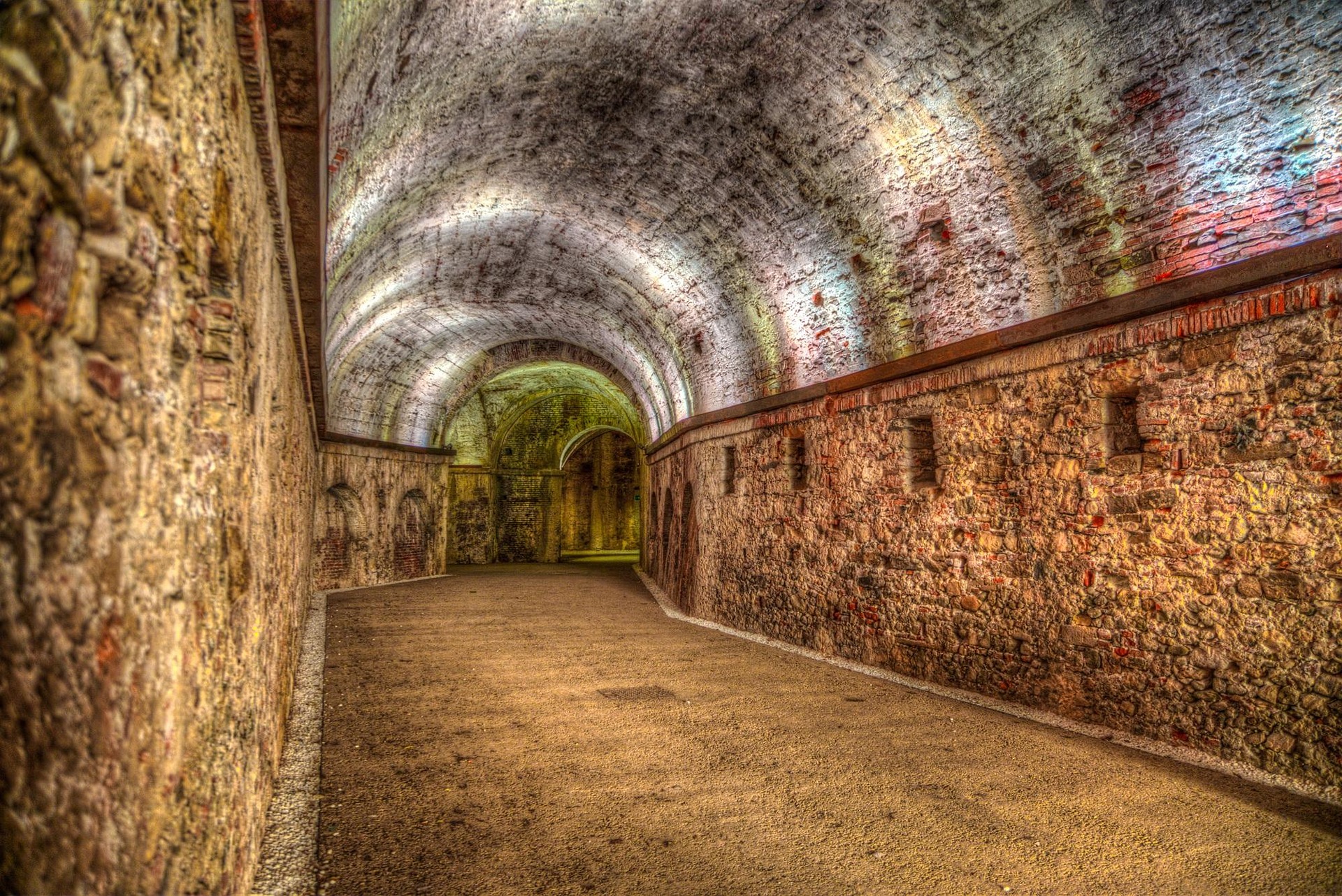
Strategic Architecture of the Fortifications
The walls of Lucca represent a masterpiece of Renaissance military engineering. Standing twelve meters high and stretching over four kilometers, these fortifications weren’t built like earlier medieval walls.
The designers created them specifically to withstand cannon fire and artillery—the modern weapons of their time. Each of the eleven bastions has a different shape, carefully planned to eliminate blind spots where enemies might hide.
I was fascinated by how practical yet beautiful these structures are. The thick walls slope outward at the base, designed to deflect cannonballs rather than merely absorb impacts.
Inside the ramparts, I discovered large vaulted chambers where bronze cannons and other weapons were once stored. These spaces feel surprisingly airy and well-designed.
Experiencing the Gateways: Porta Santa Maria and Beyond
The gates of Lucca offer some of the most impressive architectural moments along the walls. Porta Santa Maria stands as my favorite entrance, with its imposing stone archway and elaborate decorations.
Each gateway tells a story of both defense and welcome. As I passed through them, I imagined traders, diplomats, and armies approaching these same entrances centuries ago.
The gates function as transition points between the bustling inner city and the peaceful wall-top pathway. Some still have their original wooden doors, while others display the coat of arms of the city.
Walking through these portals feels like stepping between different worlds. The contrast between the cool, shadowy passages and the sunlit promenades above creates a magical atmosphere I haven’t found elsewhere.

Image Source: Tripadvisor
The Spellbinding Views from the Ramparts
The top of Lucca’s walls offers breathtaking panoramas in every direction. Looking inward, I saw red-tiled rooftops, church towers, and the distinctive Guinigi Tower with oak trees growing from its top.
Gazing outward reveals the beautiful Tuscan countryside, with mountains forming a dramatic backdrop on clear days. The ramparts provide perfect vantage points for photography or simply taking in these views.
I recommend visiting at different times of day. Morning light brings out the warm colors of the city, while sunset casts a golden glow over everything. The eastern sections of the wall offer the best mountain views.
What makes these vistas special is how they combine natural beauty with centuries of human history. Every direction holds something worth seeing, whether it’s architectural details or sweeping landscapes.
Cultural Heartbeat: Monuments and Artistic Legacy
Lucca’s walls embrace a treasure trove of artistic and cultural gems that reflect the city’s rich heritage. Walking along the fortifications offers glimpses of magnificent structures that tell stories of faith, music, and noble families who shaped this Tuscan jewel.
Duomo di San Martino and Its Majestic Presence
The cathedral stands as a masterpiece of Romanesque architecture with its striking asymmetrical façade. I was captivated by the intricate marble work and the famous labyrinth carved into one of the cathedral columns.
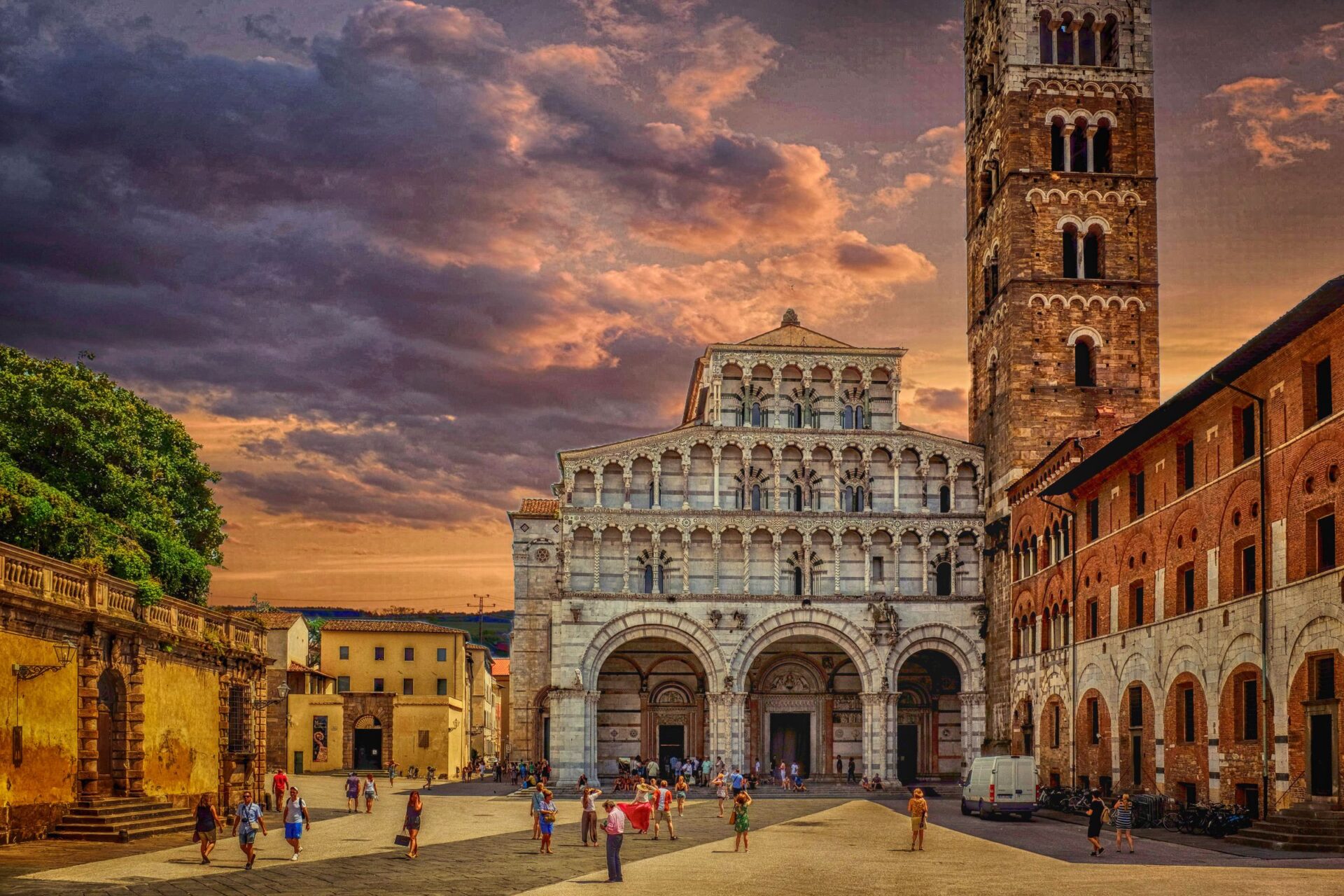
Inside, I discovered Ilaria del Carretto’s tomb sculpted by Jacopo della Quercia – a Renaissance masterpiece that moved me with its serene beauty. The cathedral houses Tintoretto’s Last Supper and the remarkable wooden crucifix known as the Volto Santo (Holy Face).
This sacred relic draws pilgrims from across Europe and is celebrated during the September candlelit procession that winds through Lucca’s narrow streets. The cathedral’s bell tower offers panoramic views that complement the perspective from the city walls.
Giacomo Puccini’s Notes in the Labyrinth of Streets
As I wandered the maze of streets visible from the walls, I felt Puccini’s presence everywhere. The composer of La Bohème and Madama Butterfly was born in Lucca in 1858, and his birthplace home has been transformed into a museum.
The small apartment contains original furnishings, his piano, and personal items that offer intimate glimpses into his early life. Bronze statues of Puccini grace the city, and his music fills the air during regular concerts at the San Giovanni church.
I recommend timing your wall walk to end near Piazza Cittadella in the evening, where you might catch the sounds of arias drifting from the Puccini Museum. The composer’s influence on Italian opera represents Lucca’s significant contribution to world culture.
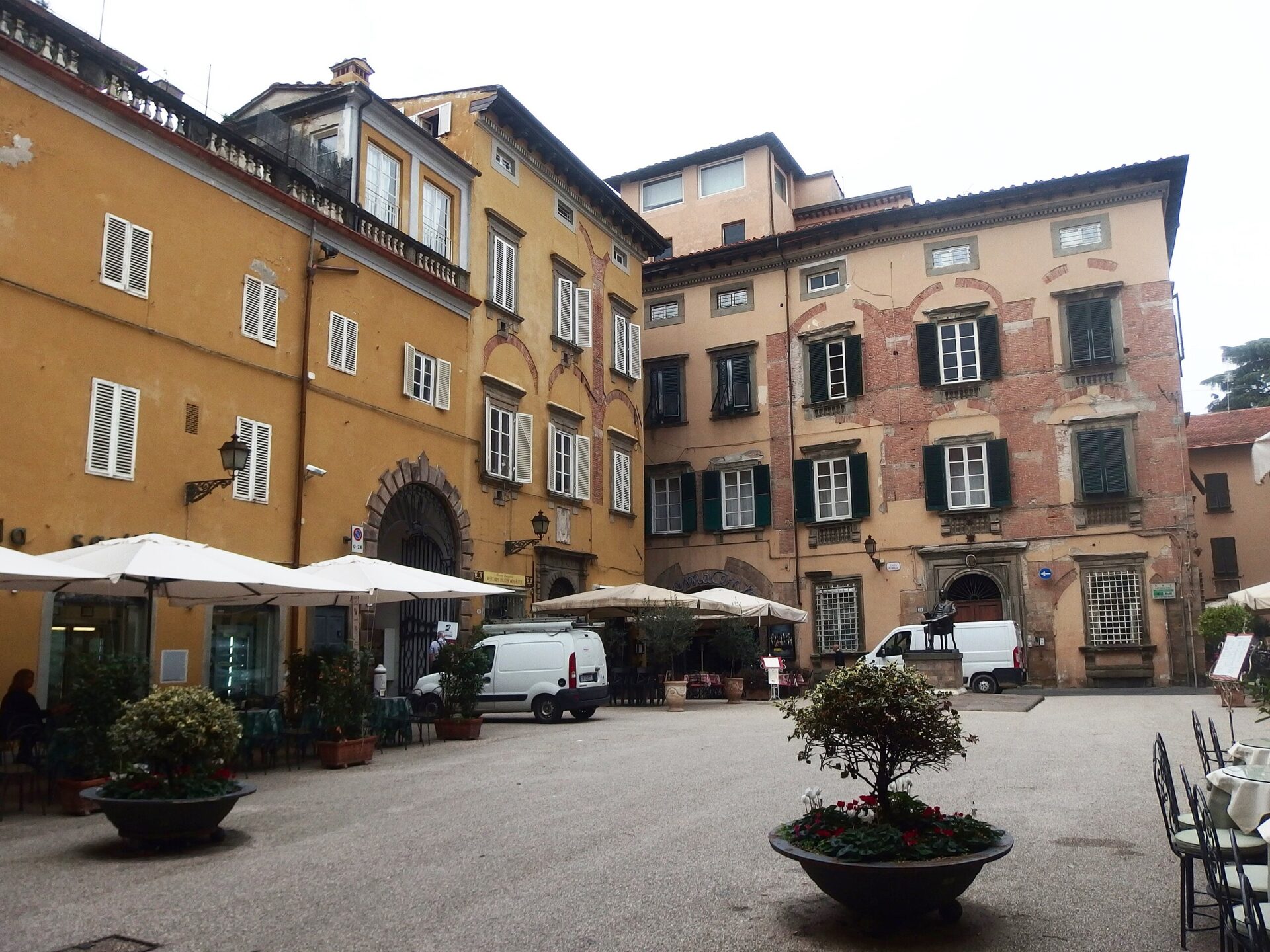
Image Source: Wikimedia Commons
Torre Guinigi: A Towering Witness to Lucca’s Past and Culture
The unique Torre Guinigi stands out among Lucca’s landmarks with its crown of ancient oak trees. This 45-meter tower belonged to the powerful Guinigi family who planted the trees as symbols of rebirth and prosperity.
Climbing the 230 steps to reach the rooftop garden was well worth the effort. From this vantage point, I gained a different perspective of the city walls and the Renaissance urban planning within them. The tower represents the architectural ambition of wealthy merchant families during Lucca’s golden age.
The surrounding neighborhood contains other cultural treasures like the Church of San Michele with its soaring façade and San Frediano with its golden mosaic. These monuments reflect the Revival of Learning that characterized the Renaissance period, bringing classical influences to Lucca’s art and architecture.

The Vibrant Life along Via Fillungo
While walking Lucca’s ancient walls offers breathtaking views, stepping down into the city leads you to its beating heart. Via Fillungo buzzes with locals and visitors alike, creating a vibrant atmosphere that captures the essence of Luccan daily life.
Crafting the Journey: From Boutiques to Gelaterias
I love getting lost in Via Fillungo’s pedestrian-friendly charm. This elegant shopping street stretches through Lucca’s center, lined with historic buildings housing everything from high-end boutiques to traditional craft shops.
The narrow lane invites leisurely exploration as I weave between fashionable storefronts and centuries-old façades. Local artisans display handcrafted leather goods, jewelry, and ceramics that make perfect souvenirs.
My favorite part? Stopping at one of the many gelaterias for a refreshing treat. The pistachio at Gelateria Veneta is simply divine! As evening approaches, the street fills with locals enjoying aperitivo at sidewalk cafés.
The Renaissance spirit of learning and creativity feels alive here, with bookshops and art galleries nestled between fashion stores.
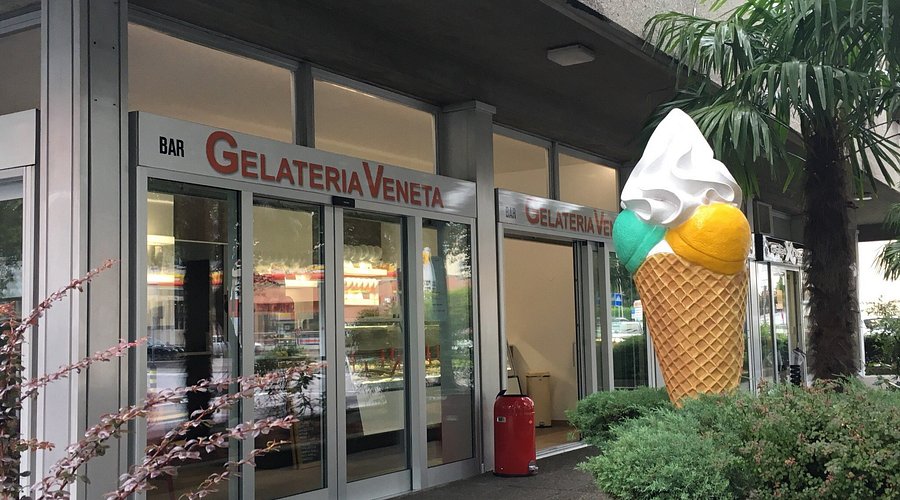
Image Source: Tripadvisor
Piazza San Michele and Piazza San Martino: Hubs of Luccan Life
Two magnificent squares anchor Via Fillungo’s energetic corridor. Piazza San Michele, dominated by its stunning white marble church, serves as Lucca’s historical center. I often find myself pausing here to admire street performers against the backdrop of medieval architecture.
The square pulses with activity – musicians, artists, and café-goers creating a lively atmosphere throughout the day. Local festivals and markets frequently transform this space into a celebration of Luccan culture.
A short walk brings me to Piazza San Martino, home to Lucca’s cathedral. The quieter ambiance here offers a perfect contrast. Renaissance influences shine through in the detailed façade and surrounding buildings.
These squares represent more than just landmarks; they’re living centers of community life where the cultural revival of learning and arts continues to this day.
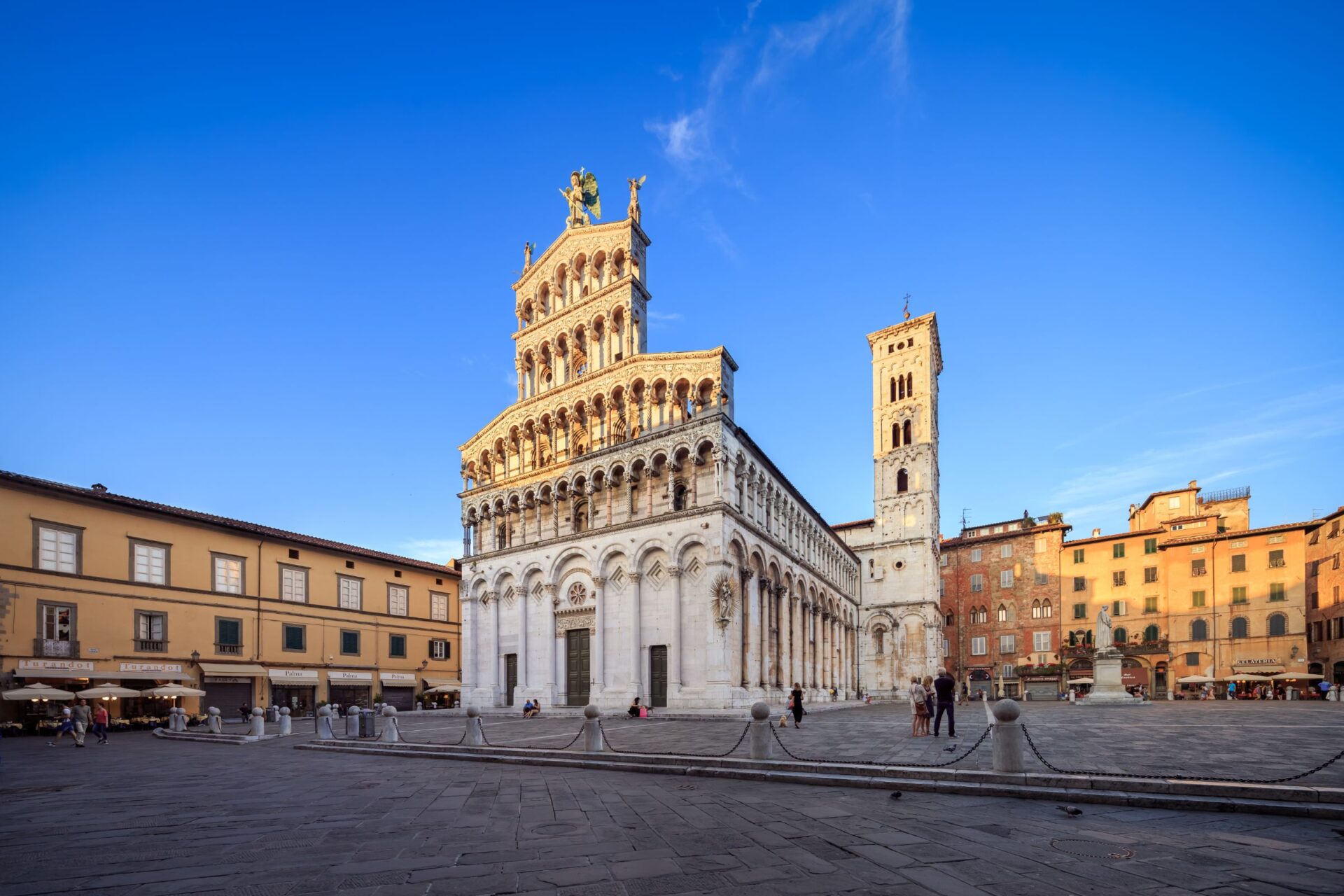
Explore Beyond the Walls: Lucca’s Influence in Tuscany
Lucca’s historical significance extends far beyond its famous walls. The city’s unique cultural identity has influenced much of Tuscany, creating connections that are still visible today when you venture into the surrounding region.
Like a Local: Day Trips to Pisa, Florence, and Siena
From Lucca, I love taking day trips to explore nearby Tuscan treasures. Pisa is just a 30-minute train ride away, making it perfect for a morning visit to see the Leaning Tower without the midday crowds.
Florence lies about an hour east, where I recommend arriving early to beat the lines at the Uffizi Gallery. The Renaissance masterpieces here share artistic connections with Lucca’s own cultural heritage.
Siena takes about two hours to reach, but it’s worth the journey. Its shell-shaped Piazza del Campo reminds me of how each Tuscan city developed its own civic identity, much like Lucca did as an independent republic.
Local Tip: Travel like a resident by taking regional trains rather than expensive tours. You’ll save money and gain authentic experiences mixing with locals.

The Echo of Lucca in Neighboring Cities and Countryside
I’ve noticed how Lucca’s influence as a former republic shaped neighboring communities. The city’s defensive expertise spread throughout Tuscany. Similar fortification styles appeared in smaller towns like Montecarlo.
During the time of the Italian Republics, Lucca maintained its independence. It also developed trade relationships with Maritime Cities like Pisa and Lombard Cities to the north. This commercial network created shared architectural styles I can still spot today.
The countryside surrounding Lucca contains villas once owned by wealthy silk merchants who brought prosperity to the region. When I visit these estates, I see how Lucca’s economic power transformed the rural landscape.
Unlike Florence with its Medici rulers, Lucca was governed by Captains of the People and merchant councils. This created a unique political system that influenced smaller communities throughout western Tuscany.
Planning Your Visit: A Traveler’s Practical Guide
Making the most of your Lucca wall experience requires some practical planning. I’ve gathered essential information about accommodations, timing, and navigation to help you enjoy this Renaissance gem fully.
Accommodations and Best Times to Visit
The city offers a range of lodging options from charming B&Bs to luxury hotels housed in historic buildings. I’ve found that staying within Lucca’s fortified town provides the most authentic experience. My favorite spots are near Via Fillungo or Piazza dell’Anfiteatro for their central location.
Spring (April-May) and early fall (September-October) offer the best weather for walking the walls.
Temperatures are mild, and the gardens along the fortifications burst with color.
Summer brings more tourists, but the thick walls and abundant shade trees make even July walks pleasant. Winter visits have their charm too – fewer crowds and a peaceful atmosphere, though some attractions may have reduced hours.

Image Source: Tripadvisor
Navigating Lucca: Transport and Tourist Information
Getting to Lucca is straightforward. The city sits about 20 minutes by train from Pisa. It is also 75 minutes from Florence.
Once there, I recommend exploring on foot or by bicycle. You can rent bicycles from several shops near the walls.
The Tourist Information Center on Piazza Santa Maria provides excellent maps. These maps highlight the walls’ access points and key attractions. They offer:
- Wall walking guides: Detailed booklets with historical context
- Audio tours: Available in multiple languages
- Guided tour information: Times and meeting points
Inside the fortified town, streets follow a Roman grid pattern. This makes navigation surprisingly easy. Public restrooms are available at several points along the walls. They are well-maintained due to local preservation efforts.
I recommend downloading the official Lucca app. The app includes offline maps and details about historical landmarks along your wall circuit.

